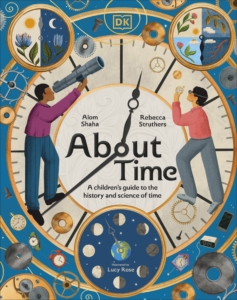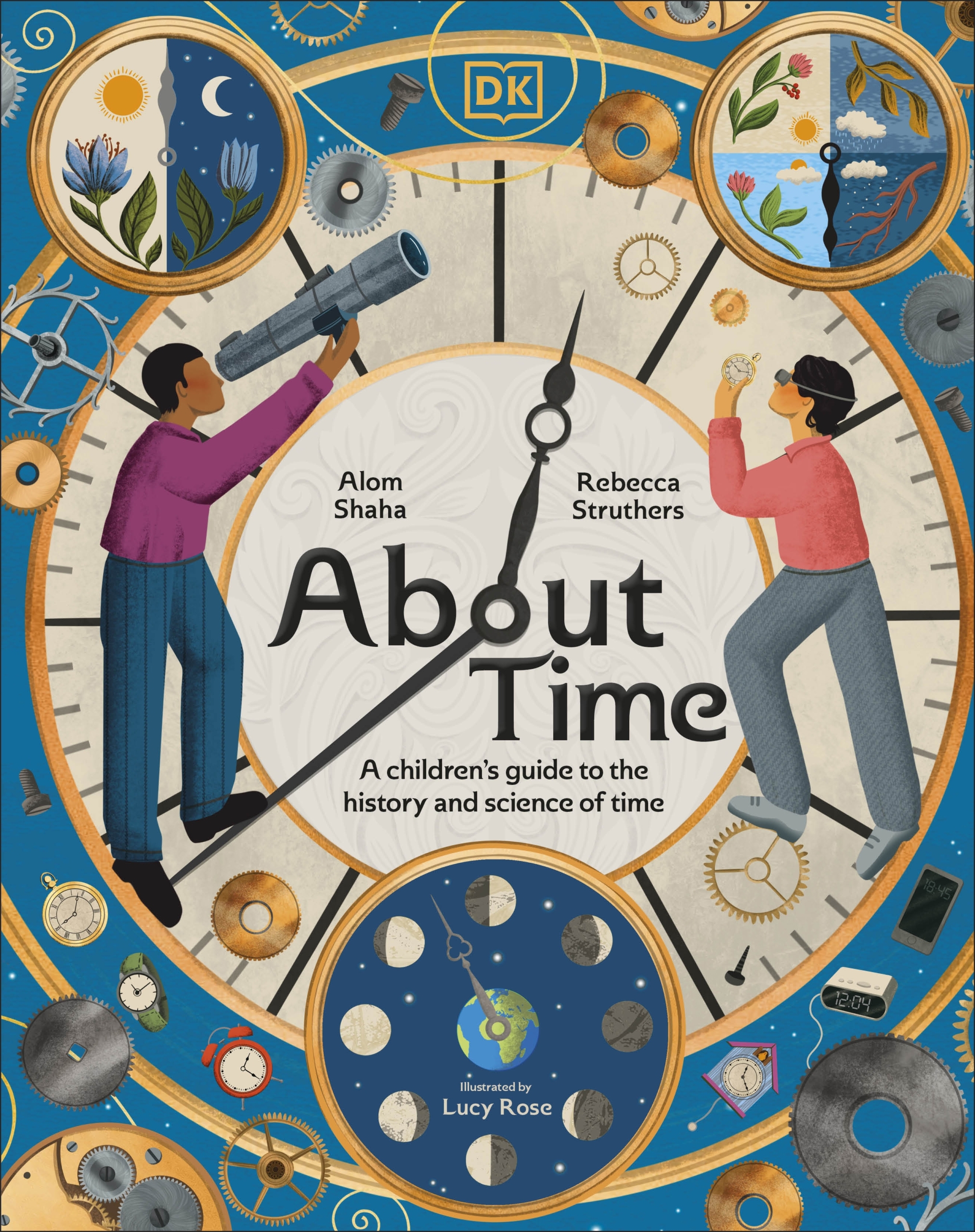About Time by Alom Shaha and Rebecca Struthers

I’ve loved watches since I was a child so I was delighted when I met Rebecca, an actual watchmaker. Watches gave us something to talk about while we were waiting for others to join a meeting we were in, and we soon found we connected in other ways. Rebecca asked me to join her on the board of trustees for the Museum of Timekeeping and, on a visit there, I noticed there weren’t any books about time or watchmaking for children in their bookshop. I can’t remember which one of us said “why don’t we write one?” but remarkably, just a couple of years later, we’ve produced a book to fill that gap.
What was the process of research and favourite piece of information you found out?
I wrote a lot of the science sections of the book and I was already familiar with some of the physics of timekeeping from my work as a school science teacher. My favourite piece of information in the book is something I learned from Rebecca – In the 1700s, the Swedish biologist Carl Linnaeus suggested making a clock that used flowers to tell the time. It made use of the fact that certain plants have flowers that open and close at set times of the day. Sadly, I don’t think anyone has actually made such a clock (not that it would be terribly accurate).
Please include an interesting fact from the book?
From the section “Time and Space”, pages 10-11: In Physics, the concept of things happening “at the same time” is meaningful only within a limited region of space, slightly larger than Earth.


